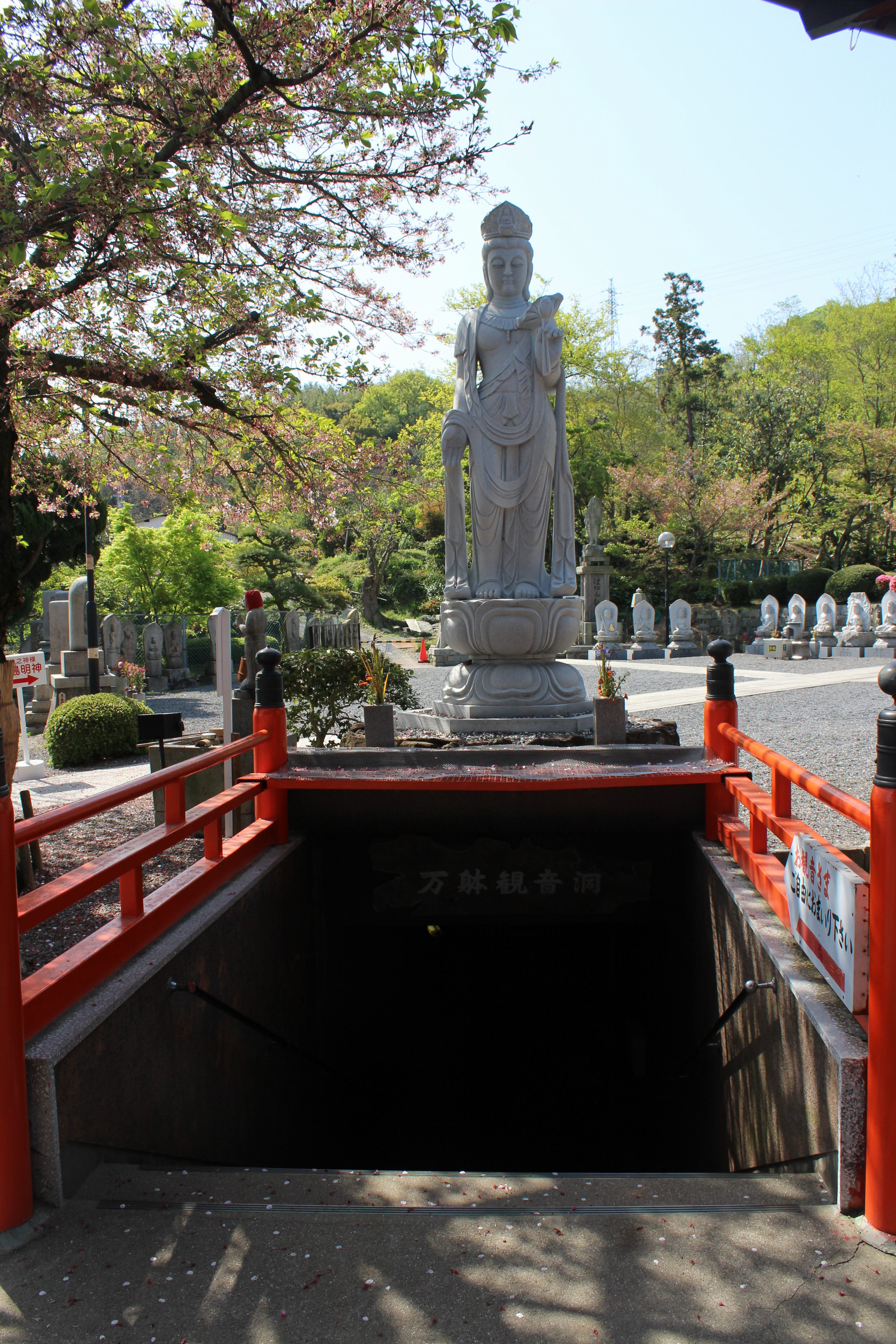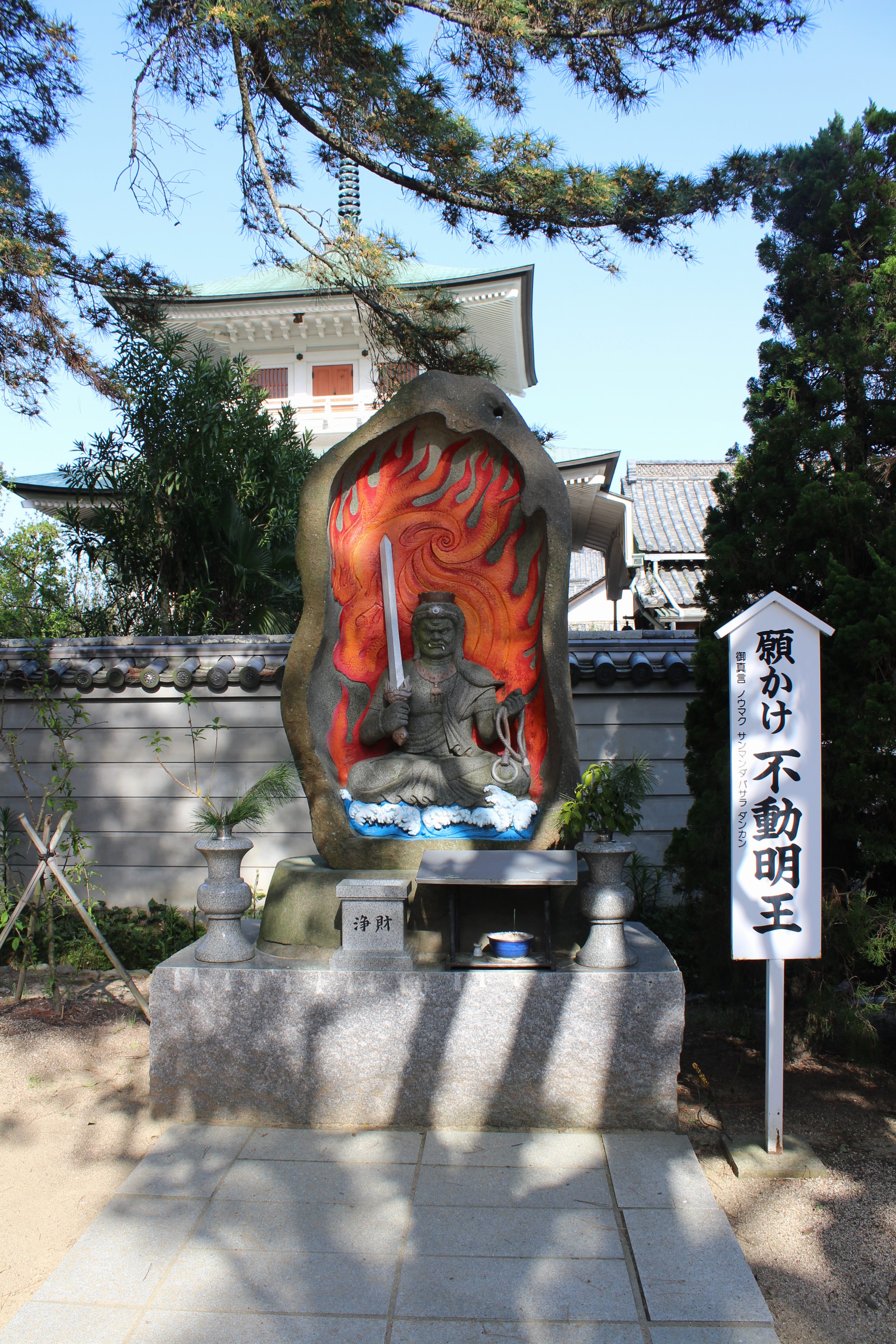Kannon and the beauty of detail (temples 76 – 79)
The soil in the Kagawa prefecture contains a lot of clay and is not good for growing
rice. However, the soil is very suited for growing wheat. Therefore, wheat noodles
(udon) are the most famous dish in this area.
All over Shikoku, I saw people working in their gardens. They always focused on tiny
areas, weeding with utter carefulness, even when the surrounding area was ugly. I
loved their love for detail! Also, people working outside always wore hats and gloves.
They do not like the skin becoming brown.
The love for detail I especially could see in temples and shrines. The sense for beauty
and aesthetics was stunning. Gōshōji (temple 78) was one of the temples I especially
liked.
Walkway to the Daishi hall with gorgeous floral ceiling reliefs
Beside the Daishi hall in Gōshōji, a stairway leads to the entrance of an underground
hall (Mantai Kannon Dō, Ten-thousand Kannon Hall) dedicated to Kannon, the
Bosatsu of Compassion. Kannon is the translationof Avalokita-svara, Observing-
sounds (of cries), or Avolokita-īśvara, Observing-omnipotent (in responding).
Thousands of little Kannon statues are lined up all along the wall. I was told that the
temple was dedicated to dead children.
In addition to the statues, many little toys were given as offerings to Kannon.
Garden of Gōshōji
Kokubunji (temple 80) is the fourth temple on the 88 temple pilgrimage carrying the
same name.Kokubunji means province temple, which was built in each province
according to the decree of Emperor Shomu in 741 C.E. . In each of the four provinces
of Shikoku, there exists a temple called Kokubunji.
The temple contains a jōroku,16 feet tall, Senju-kannon, One-thousand-handed
Kannon, the tallest one of the Shikoku pilgrimage. It is kept out of sight from the
public and is considered a Hibutsu, a secret or hidden Buddha.
Fudōmyō-ō, the Unmovable (Acala) with the pagoda in the background
.
.
.










